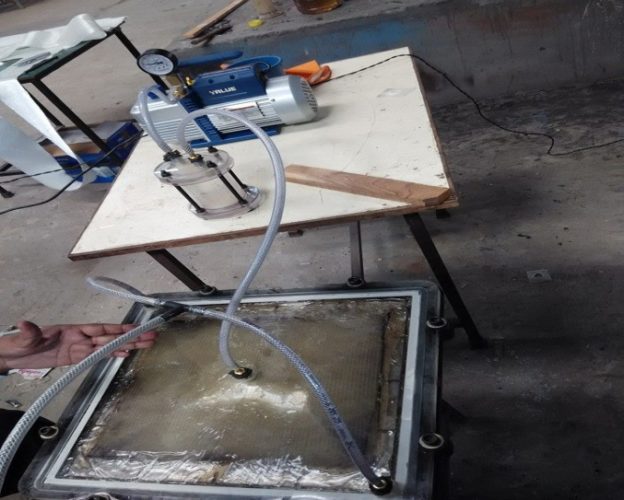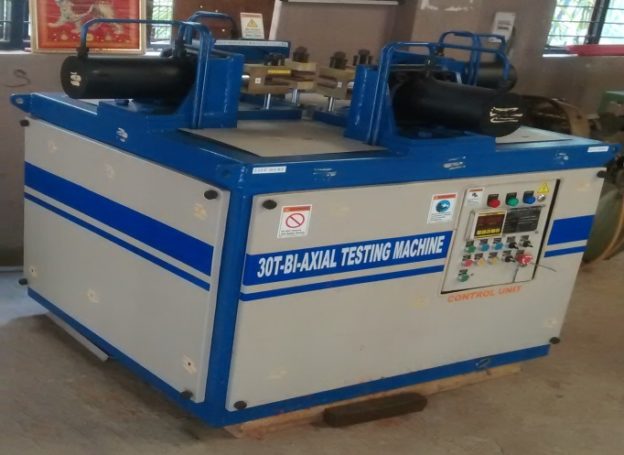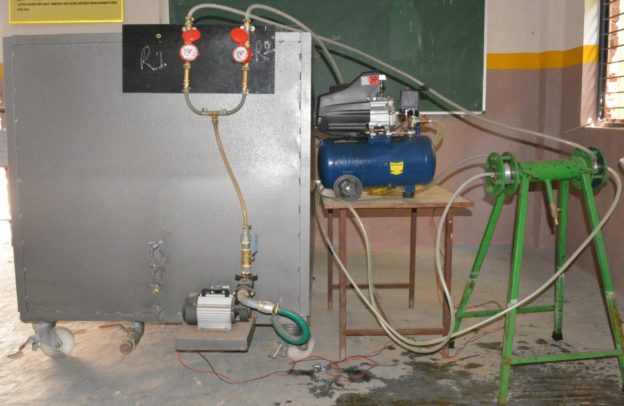Innovation Centre
DEPARTMENT OF MECHANICAL ENGINEERING
The TKR College of Engineering & Technology is Established in 2002, with 4 branches. Later the Department of Mechanical Engineering was established in 2005 with an intake of 60 and presently the department was running with 120 in-take. The Department was accredited in 2014 for about 3years, this accreditation is valid till 2018 June.
The composite center for innovation was established in 2013 July with a vision of inculcating the research temperament in undergraduate students and faculty members in view of promoting the technology towards utilizing the advantages of advanced composites for the purpose of catering the needs of urban and rural population with an objective of replacing wood materials with composite materials to curb the indiscriminate cutting of trees, which may lead to the global warming.
The center has already acquired support from the local fiber reinforced polymer industries such as SVS Hydraulics, which is manufacturing pultruding machines, SMC based products manufacturing such as doors and windows frames for low cost housing. There is lot of synergy between the industry and this institution by supporting each other by sharing knowledge through under graduate, post graduate and Ph.D. level research activities perused in this premises.
This industry has sponsored a machine to conduct Bi-Axial tensile and compressive testing machine, which is supporting the research works of 3Ph.D scholars. The Bi-Axial tensile and compressive testing machine is needed to thoroughly analyze the failure behavior of various composite materials. Which is important to establish failure theories of laminated composite materials which may lead to design optimization of shell structures, columns and struts made by laminated composites. This research activity will definitely support the young entrepreneurs those who would like to establish their enterprises in the area of composites which is an up-coming area, which is having a lot of scope for new markets which are probable to emerge in near future.
The innovation center has developed their own machinery to mechanize the manufacturing processes to improve the working environment of FRP work shop’s work force.
The list of machinery developed for the innovation center:
| Sl.No | Description of the equipment developed | specifications | Remarks |
|---|---|---|---|
| 1 | Vaccum assisted resin transfer moulding | Specimen size is 400mmx400mm | ———— |
| 2 | Flexural fatigue analysis machine | 30mmx5mmx200mm | Customized data logging system |
| 3 | Bi-axial tensile and compression test machine | Each hydraulic cylinder with a capacity of 30T loading | With Customized data logging system |
| 4 | Water treatment system | Capable to handle 40lpm to100lpm of water | Can be coupled to a cooling tower |

1. Vaccum Assisted Resin Transfer Moulding (VARTM)

2. Vaccum Assisted Resin Transfer Moulding (VARTM)

3. Flexural Fatigue Machine

4. Bi-Axial Tensile and Compression Testing Machine
Chemical free water treatment system with Hydrodynamic Cavitation Treatment mechanism:
Apart from that the innovation center of department of mechanical engineering also hose the research activities pertaining to chemical free water treatment systems, an equipment was developed and put to use to precipitate the dissolved salts presently in the ground water. This research work is progressing with an objective of optimizing the process parameters to lower the dissolve salts concentration and hardness of the water. This machine is developed with an objective of finding a solution for Waste removal system’s performance enhancement.
This research explores a potential solution to the problems that calcium carbonate scaling causes to water supply systems around the world. This chapter reviews the worlds growing need for need of water, defines the need of calcium carbonate scaling, and covers the project aims objectives, scopes and structure. The chapter provides a broad map of the issues that are explore in depth in subsequent chapters.

Schematic representation of Hydrodynamic Cavitation Treatment

Hydrodynamic Cavitation Treatment Assembly experimental set up
